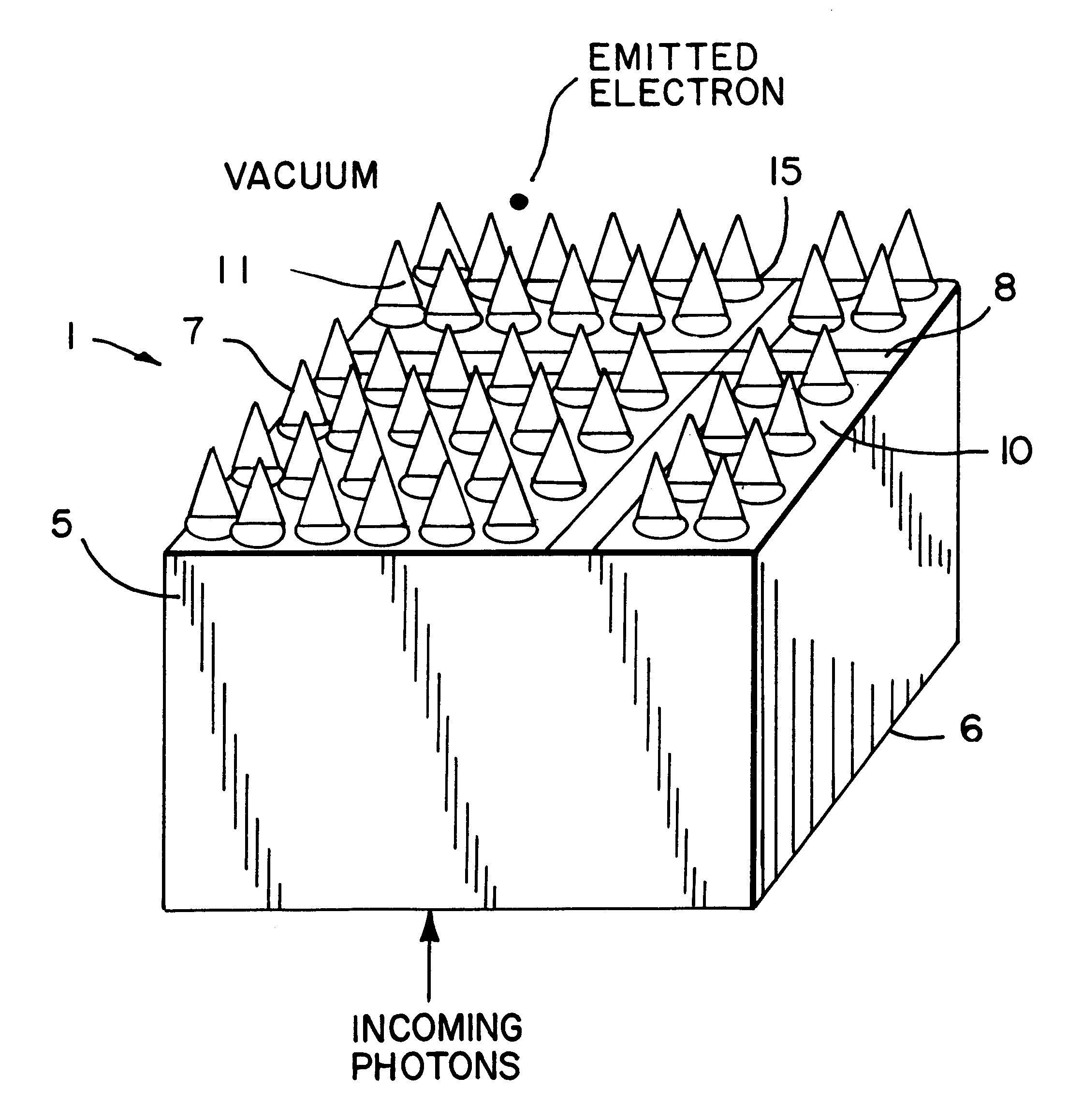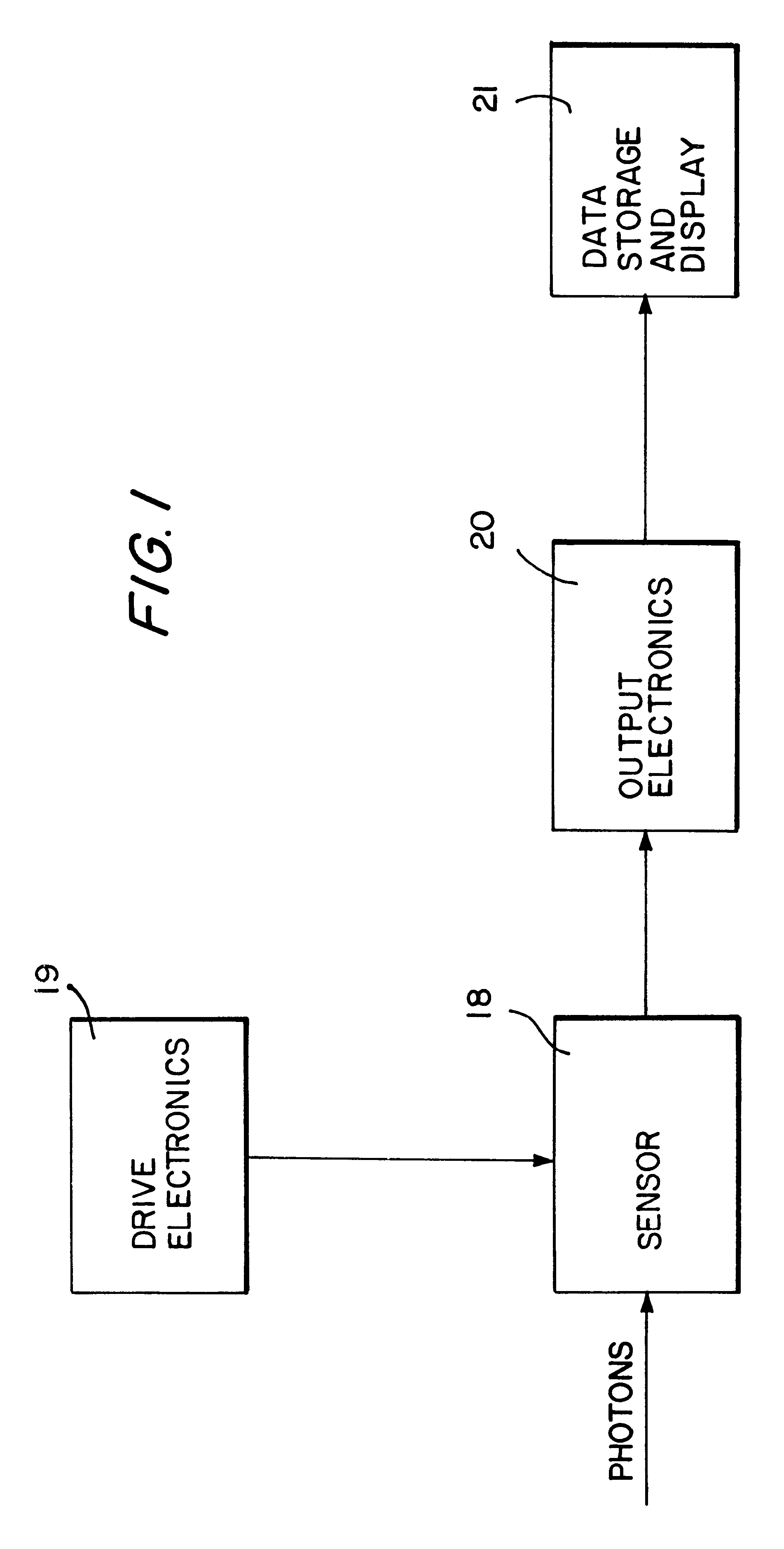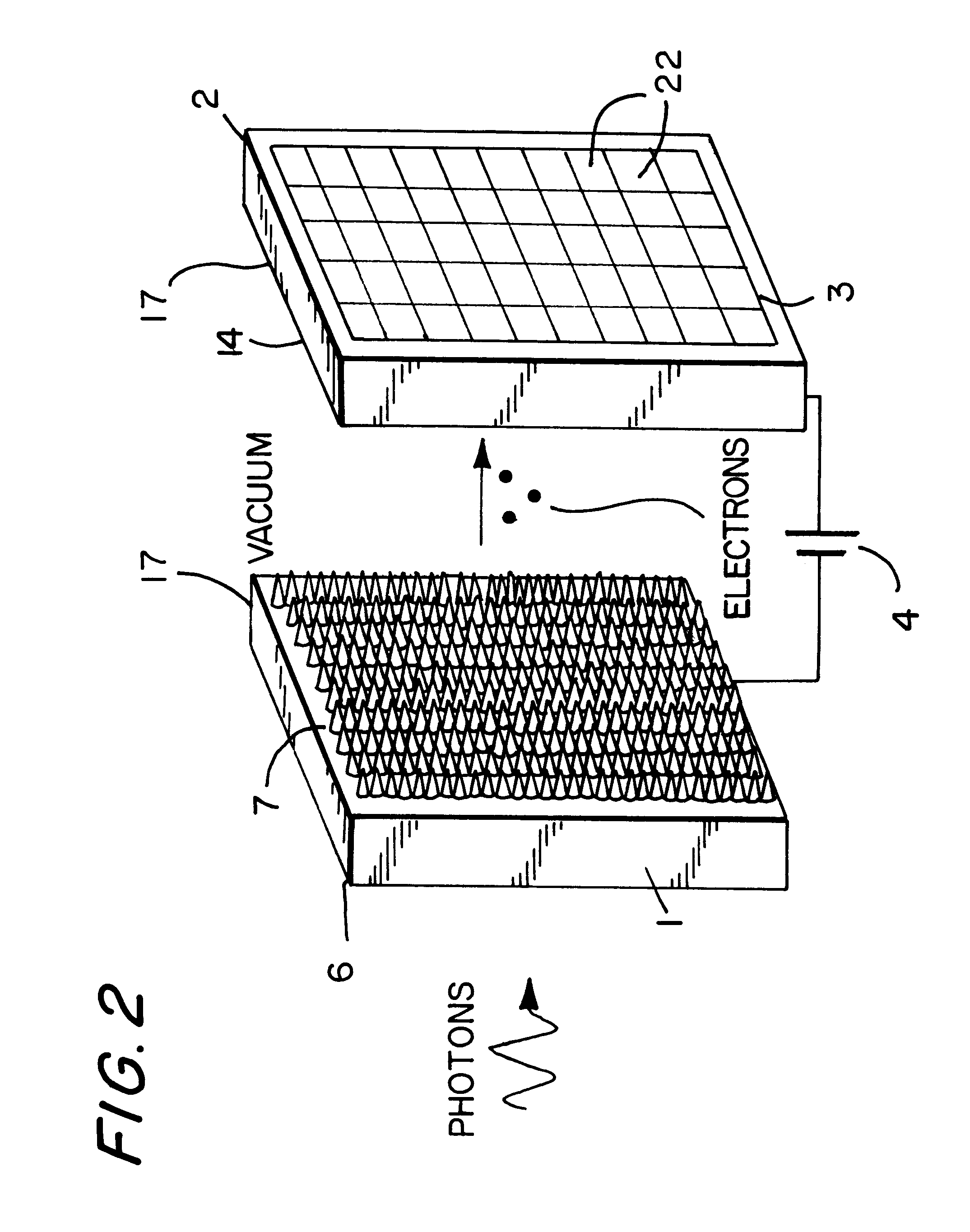Semiconductor X-ray photocathodes devices
a technology of x-ray photocathode and semiconductor, applied in the direction of discharge tube luminescnet screen, radiation control device, instruments, etc., can solve the problems of limiting the accuracy of energy discrimination, poor quantum efficiency of the photocathode that can detect scintillator-produced photons, and inefficient conversion of x-rays to visible-light photons, etc., to achieve higher x-ray energy discrimination, reduce noise, and eliminate sci
- Summary
- Abstract
- Description
- Claims
- Application Information
AI Technical Summary
Benefits of technology
Problems solved by technology
Method used
Image
Examples
Embodiment Construction
FIG. 1 depicts a high-speed photon counting and / or energy discriminations system. The sensor 18 is connected to drive electronics 19 and output electronics 20. The sensor 18 consists of one or more sensor modules 17. The output electronics is connected to data storage and display electronics 21.
A preferred embodiment of the present invention, the proximity-focused photon sensor module using ASET-X as a photocathode device, is described. The proximity-focused sensor module 17 is depicted in FIG. 2 and is capable of detecting an x-ray photon, with high efficiency, high-speed and low noise. The proximity focused sensor module in FIG. 2 is comprised of an ASET-X photocathode device 1, a diode array 2 with a corresponding readout unit cell electronics array 3, fabricated on the front side of the diode array, and a voltage source 4 which accelerates electrons emitted from the photocathode device 1, through a vacuum, into the diode array 2. The diode array is comprised of an array of indiv...
PUM
 Login to View More
Login to View More Abstract
Description
Claims
Application Information
 Login to View More
Login to View More - R&D
- Intellectual Property
- Life Sciences
- Materials
- Tech Scout
- Unparalleled Data Quality
- Higher Quality Content
- 60% Fewer Hallucinations
Browse by: Latest US Patents, China's latest patents, Technical Efficacy Thesaurus, Application Domain, Technology Topic, Popular Technical Reports.
© 2025 PatSnap. All rights reserved.Legal|Privacy policy|Modern Slavery Act Transparency Statement|Sitemap|About US| Contact US: help@patsnap.com



